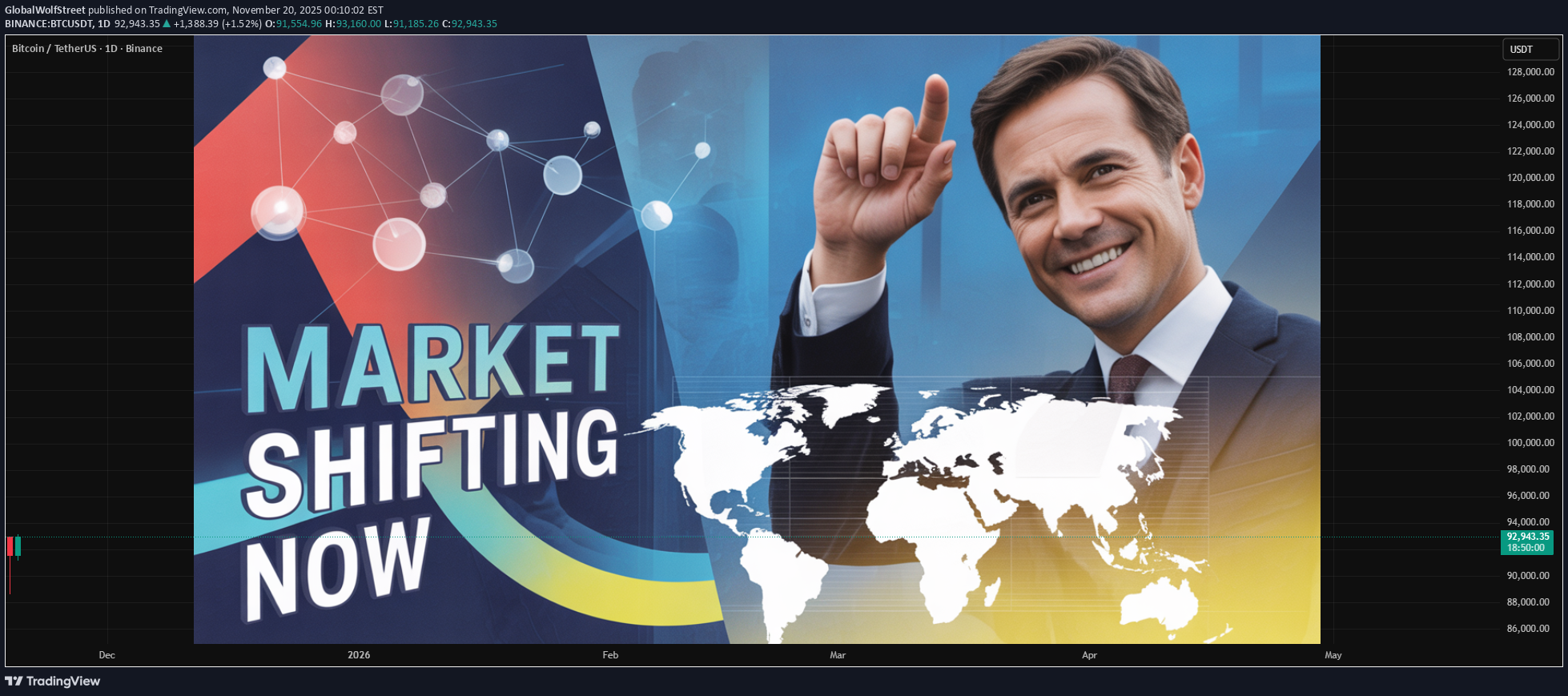20.11.2025 tarihinde sembol BTC hakkında Teknik GlobalWolfStreet analizi
تجارت جهانی در حال تغییر؛ آینده بازارهای بینالمللی چگونه خواهد بود؟

Dynamics, Drivers, and the Future of International Commerce The global trade market is undergoing one of the most significant transitions in modern economic history. For decades, globalisation shaped the world’s economic landscape—reducing trade barriers, integrating economies, and enabling companies to expand across borders with unprecedented ease. However, the world is now witnessing a shift marked by geopolitical tensions, supply chain disruptions, rising protectionism, technological transformation, and new regional economic alliances. This shift does not signal the end of global trade; rather, it marks the evolution of a more complex, diversified, and strategically fragmented global trade system. This transformation is influencing industries, governments, businesses, investors, and consumers, creating both risks and opportunities. Understanding these shifts is crucial for anyone engaged in global business, financial markets, policymaking, or strategic planning. 1. From Hyper-Globalisation to Strategic Globalisation Between the 1990s and early 2010s, globalisation accelerated rapidly. Countries pursued free trade agreements, multinational corporations expanded production worldwide, and emerging economies—especially China—became major manufacturing hubs. However, the model of “hyper-globalisation” began to slow after 2015 due to: geopolitical conflicts rising economic nationalism trade wars (notably U.S.–China) global pandemic disruptions technological competition As a result, economies are shifting from traditional globalisation to strategic globalisation—a system where trade decisions focus on resilience, security, and long-term stability rather than just cost efficiencies. 2. Geopolitical Tensions and the Rise of Fragmented Trade Blocs One of the most significant forces shaping global trade is geopolitics. Rivalries between major powers—especially the U.S., China, and the EU—are influencing global supply chains and trade flows. Key geopolitical drivers: U.S.–China strategic decoupling Both countries are reducing their dependence on each other in technology, manufacturing, and investment sectors. Russia–Ukraine conflict Resulted in major disruptions in energy, grains, and fertilizers, forcing Europe and Asia to diversify suppliers. Middle East tensions Affect global oil trade routes and shipping costs. New alliances and mini-lateral agreements Nations are forming smaller, strategic partnerships rather than large global agreements. This geopolitical fragmentation is creating regionalization, where countries prefer trade within trusted or nearby partners. 3. The Reconfiguration of Global Supply Chains The pandemic revealed the vulnerability of long, complex supply chains. Lockdowns, transport delays, and shortages of critical materials pushed companies to rethink their strategies. New supply chain trends include: Near-shoring – Moving production closer to end markets (e.g., U.S. companies shifting from China to Mexico). Friend-shoring – Outsourcing to politically aligned nations (e.g., India gaining attention due to its stable relations with the West). China+1 strategy – Businesses diversifying manufacturing to India, Vietnam, Thailand, and Indonesia. Automation and digital supply chains – Enhanced efficiency using AI, robotics, and data. This restructuring aims to build resilience, reduce risk, and increase production agility. 4. Technological Power Shifts in Global Trade Technology has always influenced trade, but today its role is transformational. Countries that dominate critical technologies gain economic and strategic advantage. Key technological drivers: Artificial Intelligence (AI) AI-driven optimisation in logistics, trade forecasting, port automation, and smart manufacturing is reshaping global competitiveness. Semiconductor industry shifts To reduce dependency on Asia, the U.S. and Europe are heavily investing in local chip production. Digital trade and e-commerce Cross-border digital services trade is growing faster than goods trade. Blockchain and fintech Transforming trade finance, supply chain verification, and international payments. These technologies change not only how goods move but how value is created in the global economy. 5. Growth of Regional Economic Powerhouses Regional groups are becoming stronger as economies diversify trade partners and reduce reliance on global structures. Major regional blocs gaining momentum: RCEP (Regional Comprehensive Economic Partnership) Now the world’s largest trade bloc, covering East Asia and the Pacific. EU integration strengthening after supply chain disruptions USMCA replacing NAFTA, boosting North American regional manufacturing. African Continental Free Trade Area (AfCFTA) Creating a unified African market. These regional arrangements highlight how trade is shifting from global dependence to regional consolidation. 6. Sustainable Trade and Green Globalisation Climate change regulations are influencing global trade structures. Many economies are adapting by adopting sustainability-focused strategies. Examples include: Carbon border taxes (EU’s CBAM) increasing trade costs for carbon-intensive imports. Demand for clean energy equipment (solar panels, lithium batteries, green hydrogen) reshaping global export flows. Greener logistics such as electric freight vehicles, sustainable shipping fuels, and greener ports. Countries that lead in green technologies are becoming new trade leaders. 7. Impact on Emerging Markets and Developing Economies The shift in global trade is especially important for emerging markets. Nations like India, Vietnam, Indonesia, and Mexico are benefiting from diversification away from China. Advantages: Increased FDI in manufacturing Job creation Integration into global supply chains Expansion in exports of electronics, pharmaceuticals, textiles, and automobiles However, other developing economies may face challenges due to stricter sustainability standards, rising protectionism, and limited access to advanced technologies. 8. Implications for Businesses and Investors The shifting trade landscape affects corporate strategy, market expansion, production costs, and investment decisions. Key implications: Companies must diversify supply chains to reduce geopolitical risks. Investors are shifting capital into markets benefiting from trade realignments. Trade-dependent industries like automotive, electronics, chemicals, and energy are re-evaluating global operations. Currency volatility and commodity price fluctuations will influence global trade profitability. Businesses that adapt to these changes will gain competitive advantage. 9. The Future of the Global Trade Market The global trade market is not shrinking—it is being reshaped. The future will involve: More regional trade partnerships Strategic, secure, and technology-driven supply chains Increased role of AI and automation Competition in green and digital technologies More balanced trade flows across Asia, Europe, and the Americas A shift toward economic security over low cost Instead of a single global market led by one dominant nation, the future may feature multiple global trade hubs, interconnected but competitive. Conclusion The shifting global trade market reflects a world adjusting to new realities—geopolitical tensions, technological advances, environmental demands, and the need for resilient supply chains. This transition marks the evolution from old-style globalisation to a smarter, more secure, and strategically diversified trading system. Countries and businesses that adapt proactively to this new trade order will be best positioned to benefit from future opportunities.
